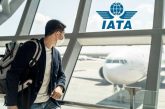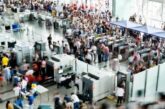
Strong Passenger Demand Resumes in September
aTP- Arab tourism portal News- (Geneva) – The International Air Transport Association (IATA) announced global passenger traffic results for September showing that demand (measured in revenue passenger kilometers, or RPKs) grew 7% compared to the same month in 2015. This was the strongest year-over-year increase in seven months. Capacity climbed 6.6% and load factor edged up 0.3 percentage points to 81.1%. Growth in domestic traffic slightly outpaced growth in international traffic.
“September’s growth in passenger demand was healthy. Importantly, this rebound from August weakness suggests that travel demand is showing its resilience in the aftermath of terror attacks. We must, of course, be ever-alert to the ongoing terror threat. And overall the industry is still vulnerable to being buffeted by rising geopolitical tensions, protectionist political agendas, and weak economic fundamentals. This will still be a good year for the airline industry’s performance, but our profitability will continue to be hard-won,” said Alexandre de Juniac, IATA’s Director General and CEO.
.png)
International Passenger Markets
International RPKs climbed 6.9% with airlines in all regions recording growth compared to 2015. Total capacity climbed 7.2%, causing load factor to slide 0.2 percentage points to 80.4%.
• European carriers saw September demand rise 5.2% over September 2015. Capacity rose 5.7% and load factor slipped 0.4 percentage points to 84.8%, which was the highest among regions. Demand growth seems to be returning to normal after the disruption caused by terrorism and political instability.
• Asia-Pacific airlines’ traffic rose 8.6% in September compared to the year-ago period, although there are still signs of Asian travelers being put off by terrorism in Europe. Capacity increased 7.7%, and load factor rose 0.7 percentage points to 77.9%.
• Middle East carriers had an 11.5% rise in demand in September compared to a year ago, which was the largest increase among regions. Capacity rose faster, however, up 13.8%, and load factor dropped 1.5 percentage points to 73.9%.
• North American airlines experienced a 3.3% rise in demand. While the upward trend in international traffic has eased of late, seasonally-adjusted passenger volumes have risen at an annualized rate of 6% since March. Capacity rose 4.2% and load factor fell 0.7 percentage points to 81.5%.
• Latin American airlines’ September traffic rose 7.1% compared to the same month last year, aided by strong demand on international routes within the region. Capacity climbed just 2.4% and load factor surged 3.6 percentage points to 83.7%, second highest among regions.
• African airlines posted an 8% rise in traffic which was matched by an equivalent rise in capacity. Load factor was almost flat at 72.0%. The strong demand increase largely reflected favorable year-ago comparisons, as economic conditions in much of the continent remain challenging.
Domestic Passenger Markets
Domestic demand climbed 7.2% in September compared to September 2015, which was up from the 4.1% year-on-year growth recorded in August. India and China continued to experience double-digit annual traffic increases while elsewhere, results were decidedly mixed. All markets except Australia registered all-time highs in September load factors.
.png)
• US domestic traffic resumed its healthy growth after a slowdown in July and August, rising 4.6% in September year-over-year.
• Japan’s domestic traffic slid 0.7% in September against a backdrop of weak consumer spending.
The Bottom Line
October saw the global aviation industry take a major step ahead to ensure that its growth is sustainable. “The nations of the world came together through the International Civil Aviation Organization (ICAO) to agree a plan to offset the environmental impact generated by future air traffic growth.
In taking this unprecedented step toward achieving long-term sustainability for an entire industrial sector, governments recognized the immense contribution aviation makes to economic development and global well-being. In conjunction with our investments in more efficient technologies, infrastructure and operations, this will ensure that aviation can continue to be the business of freedom, connecting our world with safe, efficient, reliable and sustainable air transport,” said de Juniac.







